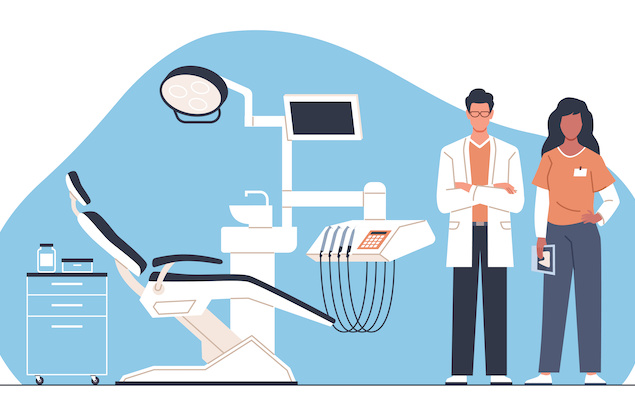ADA urges Congress to reauthorize key dental workforce programs
Association says funding would help address gaps in access to care

ADA leaders are urging lawmakers to reauthorize and invest in federal dental workforce programs, citing their critical role in expanding access to oral health care — particularly in rural and underserved communities.
In a July 15 letter to the House Energy and Commerce Committee’s Subcommittee on Health ahead of the hearing, “Legislative Proposals to Maintain and Improve the Public Health Workforce, Rural Health, and Over-the-Counter Medicines,” the ADA expressed appreciation for congressional focus on health care workforce issues and emphasized the need to support the Health Resources and Services Administration Title VII oral health training programs.
ADA President Brett Kessler, D.D.S., and Interim Executive Director Elizabeth Shapiro, D.D.S., J.D., said in the letter that Title VII investments help address barriers to care due to workforce shortages “by strengthening the pipeline of dental professionals and supporting training programs that serve high-need areas.” These programs fund dental residencies, dental faculty loan repayment, state oral health workforce strategies and career pathway initiatives, all of which aim to address persistent shortages in the dental workforce.
“Continued investment in the dental workforce is essential for addressing the rising needs of an aging population, reducing the oral-systemic health burden and curbing costly emergency department visits for preventable dental conditions,” Drs. Kessler and Shapiro wrote.
The letter also highlighted the dental faculty loan repayment program as essential in helping academic institutions “recruit and retain qualified educators, especially in pediatric dentistry and community-based clinical settings,” with Drs. Kessler and Shapiro emphasizing that this initiative “ensures the development of a strong pipeline of future dental professionals.”
Additionally, the ADA advocated for continued support of the state oral health workforce grants and the Action for Dental Health initiative, noting that more than one-third of dentists are actively recruiting dental hygienists and dental assistants and nearly 90% of them find it extremely difficult.
Other key programs mentioned include the health careers opportunity program and area health education centers, both of which help build a diverse and community-connected oral health workforce.
“We urge the subcommittee to reauthorize funding for [the Health Resources and Services Administration’s] Title VII dental training cluster, along with continued robust funding for Action for Dental Health, state oral health workforce, [the health careers opportunity program] and [area health education centers],” the ADA said. “These investments are critical to building and sustaining a dental workforce capable of meeting the needs of underserved populations, improving health access, and strengthening community resilience.”



